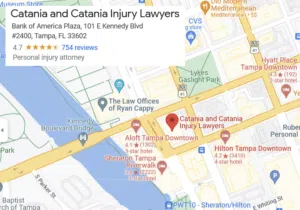
The word “thoracic” comes from the word “thorax.” In any animal, the thorax sits between the head and the abdomen. In humans, the thorax is the chest.
The ribs and diaphragm contain the thoracic cavity. An injury to the organs inside the thoracic cavity poses a significant threat to your life and health.
Table of Contents
About the Thorax

Thoracic can refer to anything associated with your thorax. The term often refers to the thoracic cavity and its organs. The thoracic cavity lies under your ribs. Your diaphragm sits at the bottom of the thoracic cavity.
The term can also refer to your thoracic spine. This section of the spine includes the vertebrae connected to the ribs.
Some of the structures in your thorax include:
Heart
Your heart includes many chambers. As your heart contracts, it squeezes blood from its chambers into your circulatory system. As your heart expands, the chambers refill with blood.
Blood carries oxygen and nutrients. When your heart stops pumping, also called cardiac arrest, tissues immediately begin to die.
After 20 seconds, you will lose consciousness. After three minutes, brain damage begins. After five minutes, your odds of survival drop to about 10%. After nine minutes, you will suffer a permanent brain injury even if EMTs successfully revive you.
Ten minutes with no heartbeat usually causes so much damage that doctors cannot resuscitate you.
Lungs
The left side of your heart takes blood from your body that contains carbon dioxide and pumps it to your lungs. In your lungs, the blood cells drop off the carbon dioxide and pick up oxygen. The oxygenated blood returns to your heart. Your heart pumps the oxygenated blood throughout your body.
Your lungs exhale the carbon dioxide and inhale a new batch of oxygen. Together, your heart and lungs remove the carbon dioxide waste from your cells and replenish them with oxygen.
An injury can cause your lungs to stop working. Similarly, drowning can fill your lungs with fluid and prevent them from taking in air. A chest injury can cause your thoracic cavity to fill with fluid or air, preventing your lungs from expanding.
Blood Vessels
Your thoracic cavity contains your major blood vessels, such as the aorta. The aorta carries oxygenated blood from your heart to your body.
As the largest artery in your body, the aorta connects to the carotid arteries that carry blood to your brain. It also carries blood to the organs in your abdomen and eventually connects to the femoral arteries that transport blood to your legs.
Your thoracic cavity also contains several blood vessels that connect your heart and lungs. The superior vena cava, inferior vena cava, and pulmonary artery carry blood to your lungs to drop off carbon dioxide. The pulmonary veins carry oxygenated blood back to your heart for delivery to your body.
Airway
Your respiratory system begins in your head and extends into your thorax. The trachea connects your nose and mouth to your lungs.
The portion of the trachea below the larynx and pharynx passes through the thoracic cavity. The airways that connect the trachea to your lungs, including the bronchi and bronchioles, also sit inside your thoracic cavity.
Thoracic Nerves
Several major nerves run through the thoracic cavity.
The vagus nerve branches to almost every organ in your thorax and abdomen, including:
- Heart
- Lungs
- Liver
- Kidneys
- Stomach
- Intestines
As a result, the vagus nerve plays a large role in controlling your heart rate, respiration, bile excretion, and digestion.
The phrenic nerve innervates your diaphragm. This means that it causes your diaphragm to extend, creating the space for your lungs to expand. It then forces your diaphragm to flex, squeezing carbon dioxide from your lungs.
Thoracic Spine
Your thoracic spine sits between the cervical spine in your neck and the lumbar spine in your lower back. It includes the vertebrae attached to your ribs through ligaments.
The thoracic spine supports your upper body. In addition to providing strength and flexibility to your upper back, it also protects your spinal cord as it passes through the thorax.
What Causes Thoracic Injuries?
Roughly 35% of traumatic deaths in the U.S. involve thoracic injuries.
Thoracic injuries can be caused by penetrating or blunt force trauma caused by:
- Automobile accidents
- Construction accidents
- Assault injuries
- Medical malpractice
- Crushing injuries
- Slip and falls
About 80% of all thoracic injuries are caused by blunt force trauma. Vehicle accidents cause most blunt chest trauma.
Examples of Thoracic Injuries
Some examples of thoracic injuries are described below.
Ruptured Aorta
A torn aorta can result from trauma. An object can penetrate the thoracic cavity and perforate the aorta. Or a violent impact from a car accident or a fall can cause the aorta to tear.
About 40% of accident victims who suffer a ruptured aorta will die immediately from blood loss.
Cardiac Tamponade
The pericardium encloses the heart and protects it from wearing against the other organs. A blow to the chest can tear tissue and cause fluid to accumulate in the pericardium.
The pressure of the fluid in the pericardium can squeeze the heart. This will result in an irregular heartbeat and may even cause cardiac arrest. A cardiac tamponade will usually cause death without emergency treatment.
Hemothorax and Pneumothorax
The lungs require low pressure in the thoracic cavity to expand. When air or blood accumulates in the thoracic cavity, the pressure can cause a lung to collapse. Doctors must remove the air or blood so the lung can re-expand. Without treatment, a collapsed lung can cause death.
Fractured Vertebra
Trauma can fracture the vertebrae in the thoracic spine. A fractured vertebra can cause a spinal cord injury by compressing or severing nerves in the spinal cord. A severed spinal cord will paralyze the accident victim.
Crushed Disc
Discs separate the vertebrae of your spine. These discs contain a fibrous shell enclosing a gel-like interior.
Trauma can crush a disc, causing it to bulge or herniate. The deformed disc can compress nerves in the spinal cord.
Compensation for a Thoracic Injury
When your thoracic injury results from someone else’s negligence, you can typically seek compensation from the party who caused your injury. This compensation will cover your economic losses, like your medical bills and lost wages. Since many thoracic injuries threaten your life, you could face expensive medical treatment and a long period of rehabilitation.
Your compensation can also cover your non-economic losses. Some examples of non-economic losses include pain, mental anguish, inconvenience, and inability to participate in daily activities.
A thoracic injury can cause permanent disability. It can even kill an accident victim. To learn more about the compensation you might recover for a thoracic injury, contact a trusted personal injury near you for a free consultation.




